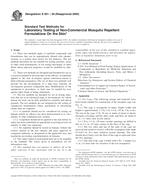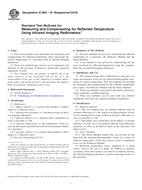1.1 These test methods cover the determination of the tensile properties of structural panels.
1.2 Structural panels in use include plywood, waferboard, oriented strand board and composites of veneer, and other wood-based layers
1.3 Test Method A, Tensile Test for Small Specimens:
1.3.1 This test method employs small specimens that should have a reduced cross section at the center of their length to avoid failure in the grip area. The transition from full width of specimen to reduced section at the center should be gradual to minimize stress concentration.
1.3.2 When the measurements of elastic properties are to be made, the length of the reduced cross section at the center should be of sufficient length to accommodate an extensometer.
1.4 Test Method B, Tensile Test for Large Specimens:
1.4.1 This test method employs large specimens and responds well to manufacturing variables, plywood growth characteristics, and other defects influencing the tensile properties of structural panels.
1.4.2 The test specimens are large enough to contain the maximum sized defects found in plywood panels. The test specimens have a constant cross section since the size and location of defects control the location of failures and the effect of stress concentration at the grips is overshadowed.
1.4.3 This test method is recommended for the following:
1.4.3.1 Comparative tests of structural panels,
1.4.3.2 Determining the influence of any specific strength reducing defects on the tensile properties of structural panels,
1.4.3.3 Determination of tensile properties of plywood and composites containing veneer with growth and manufacturing characteristics.
1.5 This standard does not purport to address all of the safety concerns, if any, associated with its use. It is the responsibility of the user of this standard to establish appropriate safety and health practices and determine the applicability of regulatory limitations prior to use.
Product Details
- Published:
- 01/01/1995
- Number of Pages:
- 5
- File Size:
- 1 file , 140 KB


